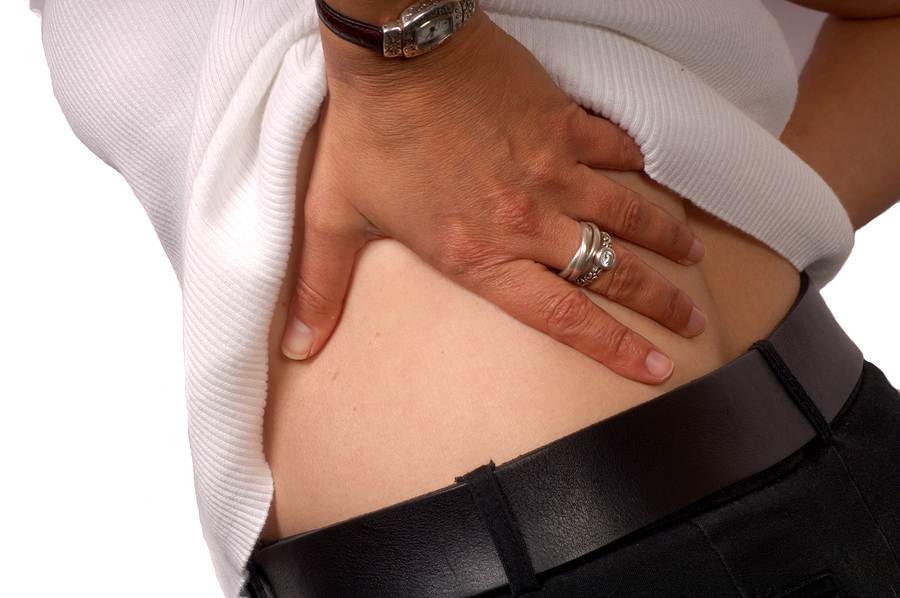- Make It Yourself Lavender Heart-Shaped Bath Bombs!
- 20 Things You Never Knew About “Down There”
- 12 Best Foods For Those Suffering From Arthritis Pain
- 12 Personal Hygiene Mistakes Almost Everyone Makes (Mom Never Told You About #4!)
- 15 Medicinal Plants And Herbs From The Cherokee People
- 12 Mind-Blowing Benefits Of Drinking Coconut Water During Pregnancy
- 12 Outstanding Winter Foods That Won’t Fatten You Up Like A Christmas Turkey
Tips For Preventing Back Pain (Sleep Is On The List, Too!)

Photo credit: bigstock.com
Back pain is one of the most ubiquitous physical ailments in modern life. The majority of people will experience a back injury at least once in their lives. Bad backs cost healthcare systems around the globe billions of dollars each year, and they have significant impacts in other areas of life and society as well. So, what can we do to reduce our risk of back pain and back injuries? Follow the steps outlined in this article to find out.
1. Back injuries caused by lifting
This is probably the most obvious thing that people envision when they think of back pain. Lifting any object the wrong way can potentially lead to injury, so it is important to use proper technique. The heavier the object, the more important this becomes.
The exact form you should follow will vary depending on the object, but a general rule of thumb is to “lift with your legs and not your back.” This means squatting down and driving up with your legs (which are probably stronger than you think) rather than trying to pull something up through brute force using your back.
Using proper form is especially important with exercise, and in particular with weight training. Not following correct form with a barbell squat or deadlift, for example, could lead to a serious injury, so ask a staff member, trainer, or other experienced lifter if you need guidance.
Continue to Page 2

Photo credit: bigstock.com
2. Sleep. YES, sleep!
Now here’s one that probably doesn’t occur to most people. The type of surface you sleep on, and your sleeping position can have a very strong impact on back pain. Think about it: You spend about one third of your life asleep. While you will toss and turn a bit in your sleep, much of that time is spent in a stationary position.
If you are sleeping in such a way that leads to an awkward spinal curvature or a position that puts pressure on the same parts of your back every night, this will lead to back pain over time. Since it may take you a while to notice the connection, poor sleep support is the type of thing that can lead to chronic, persistent back pain that takes a serious toll on your quality of life.
Experiment with different sleeping surfaces. Often, a mattress that is too soft can cause back pain since people can sink into them, which causes the backbone to curve. A firmer mattress might be just what you need. Sleeping with a pillow between the legs can also help a lot, because it can help keep your spine in alignment while you sleep. Sleeping on your back can also be beneficial for some people.
Everybody’s body is different, so it will take some experimentation to find out what works best for you.
Continue to Page 3

Photo credit: bigstock.com
3. Pick a Chair That’s Fair to Your Back
Think about how much time you spend sitting each day. If your chair at the office, for example, is not offering good back support, it can quickly contribute to back pain that will impair both your work performance and your life outside the office. Make sure you pick an ergonomic office chair that supports your back, while also allowing you to work comfortably.
4. Posture
Finally, let’s talk about your posture. If you slouch, have drooping shoulders, or some other manifestation of poor posture, guess what? You’re probably signing up for back pain at some point in your life.
Bad posture causes the muscles and the bones in your back, neck, shoulders, hips, and more to not be properly aligned. You may not feel it right away, but over time this will almost certainly lead to back pain.
Make the effort to stand up and walk straight. Perhaps investing in a new pair of shoes or gel inserts will do the trick. Either way, make the effort, and you can significantly reduce your likelihood of being a regular at the chiropractor’s office later in life.
READ MORE: Unexpected Back Pain Hazards In Your Everyday Activities Infographic
Follow these tips, and you can be reasonably assured of a lower risk for back pain, and a higher quality of life.
References:
































